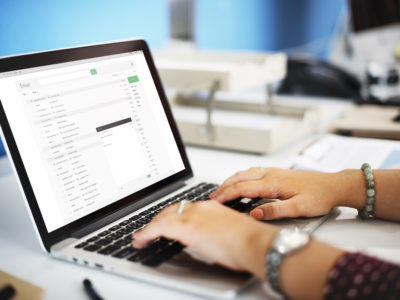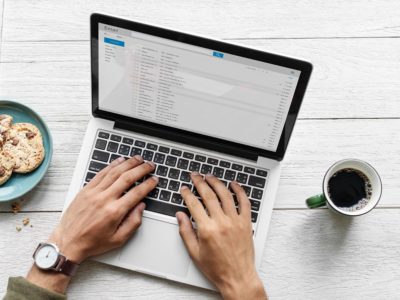If you were a teenager in the early 2000s, perhaps you penned a romantic email to win back your crush. You are likely familiar with this form of penmanship’s intricacies–or maybe you just know about email affiliate marketing. Either way, we promise you that the experience of crafting win-back emails in a professional setting is a lot less embarrassing than the unrequited love setting of spotty-faced youth.
Now that we have undoubtedly stirred memories you had probably comfortably stored away in the deepest, darkest archives of your mind (sorry), let’s delve deeper into the anatomy of the win-back email in the world of customer service marketing. What is it? How does one go about writing?
What is a win-back email?
A win-back email is part of a more extensive email marketing campaign. You send an email to anyone that already purchased from your company to entice them again. For example, you could invite them to buy more from you or switch from a free trial of your service to a paid subscription.
We typically send these emails to customers who have stopped engaging with our content (e.g., opening your emails, clicking on your links, answering your calls, etc.). The idea is to reignite that spark shared between the customer and the company.
Usually, these emails will be sent out automatically by you if you haven’t heard from your customer for a prespecified time–often about three months.
What are the benefits of win-back emails?
It’s more expensive to find new customers than to keep old ones. Consider the amount of marketing it takes to reach new customers: the targeted ads, the paid search results, the cost of hiring ad creators, and the pre-sales pitches.
On the other hand, an existing customer has already tried out your services, so as long as they’re in the market for all things unique, they shouldn’t need a lot of convincing of the virtues of what you’re selling.
A win-back email is a relatively cost-effective way to lure your customer back toward a product they already like. In addition, it doesn’t feel risky for them, as it might be for a brand new customer who might need more convincing.
By increasing the number of sales from previous customers, you’re also increasing the length and value of the customer-company relationship and return on investment.
Encouraging old customers to re-engage with your campaigns can also improve the performance of future campaigns, as that little hook might be all you need to get many customers back in the habit of engaging with your emails and content that follow.
Finally, if the win-back email doesn’t work on specific customers and they end up hitting unsubscribe, you know you’ve given it your best shot. Instead, you can focus on the customers that DO engage and what they want. Trimming the fat from your email list can allow you to create better, more relevant marketing campaigns.
So what can you do to seduce your customers back to you?
If your email comes on too strong, it can feel a bit desperate and drive the customer even further away, towards the unsubscribe button, and you could lose them for good! So instead, you want to stir their interest so that they feel lured back.
So what exactly should our emails contain? Here are three essential tips:
- Create personalized content. Nothing says “I love you, please come back” than some words specifically tailored to your customers. We all like to feel special.
- Offer discounts. We all love a bargain, especially if it’s just for us and not available to the general public.
- Offer gifts: A little free token of appreciation alongside a purchase can go a long way.
The basic steps in your win-back email strategy
Now that you understand the gist of a win-back email, let’s delve into the specific steps you need to take to deliver an effective win-back campaign. To maximize your chances for success, you need to:
- Identify the recipients of your win-back emails
Have a database of email recipients. Track data such as open rates and reply rates to see which customers have not been engaging for a while. If you have an automated inventory management system, an email management system is not dissimilar. In addition, some timeline of interactions is helpful, categorizing your email recipients by date of last exchange.
Identify customers who haven’t clicked on any of your links in a while. In other words, these are your inactive customers. Tailor your efforts to this subgroup. You can further subdivide these inactive customers by other details such as their interests, gender, age, or other factors relevant to your business and purchasing habits.
- Hook them with a seductive subject line
Once you have identified your group, or groups, of recipients for your dazzling win-back email, it’s time to find a great subject line. You want something that piques their interest with just a hint of urgency. If a title is too stressful, it might backfire and go straight to the trash bin. With so many people working from home and worrying about things like MFA and VPNs, you don’t need to add to their stress.
You want to aim for fun and interesting. The more personalized email is to the recipients, the greater chance of opening your email because it will feel more relevant to your interests. Further segmenting your inactive customers is worthwhile. Avoid clickbait; instead, aim for a more sincere tone.
- Offer the most exciting content.
Once you’ve managed to get your customers to open your emails, your next step is to get your best content in front of them. There are plenty of great digital marketing tools to help you with this campaign, but these are our best tips:
- Short and sweet is key. Don’t bog down your reader with long text. Instead, get straight to the point.
- Use simple, appealing visuals. Whatever you’re offering in your email should stand out. You can use Canva or other software to easily create visually engaging content.
- Include engaging content. Whether it’s an exclusive offer, some kind of discount, or whatever, make sure it’s something that would be sufficient to attract your customer back to your content.
- Timing is important
Waiting too long to send your win-back emails should not be forgotten. You also don’t want to bombard your customers with too much, too soon. Your customers may find this annoying and unsubscribe or mark your email as spam.
You want to find that sweet spot and pique your customers’ interest with something enticing. Many people aim for three months after the last meaningful interaction.
Win-back message example: Netflix
In Netflix’s email, they hit the nail on the head in several ways:
- They focus the reader on the enjoyment they will feel with their service.
- They remind the reader of the great qualities Netflix possesses – no ads, ease of use.
- They include posters of new releases to entice the reader back.
- They have a big red button that the reader can easily click to unlock this great stuff.
This email from Netflix is an effective win-back email because it’s simple and reminds the reader of what they’re missing.
Win-back message example: Sephora
This email is how Sephora manages to win you over:
- The personal touch (We miss you!): Even though this is an ad, words are powerful and can tug at our heartstrings even when the aim is to get us to spend money.
- Attractive aesthetic: there is a touch of glamor with the gold and images of gifts.
- An exclusive offer: $15 off a $50 purchase, a thank you for your loyalty.
- A time-limited offer: it’s only valid for 12 days and can only be used once. Very Christmassy.
- A big, clickable button: to the point.
To summarize…
Send your win-back emails to inactive customers a few months after their last interaction with you, and tailor these to them. The email should evoke feelings of exclusivity while also not being pushy and using attractive aesthetics. They should be clear, inspiring, and valuable to the customer (so they aren’t the time to talk about things like call recording disclosure, but rather fun things to attract them back to you).
Take into account customer psychology for your win-back email campaign. Put yourself in the shoes of the customer. What would bring you back?






